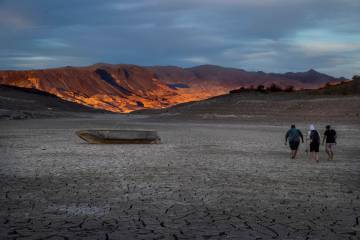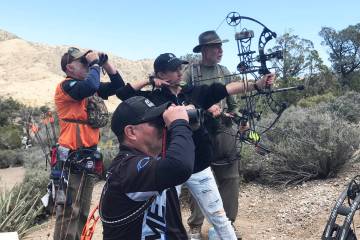It’s time to get fishing gear out of winter storage
If the folks at Guinness awarded records for the speed at which time goes by, the world record for the slowest pace must belong to 2020. The past 12 months have dragged by as we have waded through the deep waters of the unknown and negotiated the challenges of living close to home.
As their world suddenly became much smaller because of COVID-related social restrictions, people turned to the outdoors for solace. As they did, many found their way back to their fishing roots while others discovered the joys of recreational fishing for the first time. Participation remained high until winter arrived with temperatures cold enough to cover many of Nevada’s trout waters with sheets of ice.
While some experienced anglers simply shift to ice fishing during the winter months, my guess is that many of these new and reactivated anglers put their fishing tackle on ice for the winter. So to speak.
If you are among those who winterized your trout gear, now is the time to dig it out and make ready for some of the best trout fishing of the year. On our high-desert reservoirs, that generally occurs between ice out and early to mid-June, when warm temperatures send the trout to deeper water and spur seasonal weed growth that can make fishing access a challenge on some waters.
The ice already has come off Adams-McGill, Cold Springs, Haymeadow and Dacey reservoirs at Kirch Wildlife Management Area, though anglers might find skim ice along the shorelines in the mornings. Until nighttime temperatures remain above freezing, that is not uncommon, but the ice does not usually last long once the sunlight touches the valley floor.
Rainbow trout planted in these waters during the fall spend the winter growing beneath the ice, and they grow quickly. It is not uncommon to catch fish in the 18- to 20-inch range during the first few weeks after ice out. Once it warms up and spring trout plants begin, you will have to work to get your bait past the planters and down to the bigger fish.
Because of tule beds that line the edges of these reservoirs, shoreline access tends to be limited to the dams on their south ends. Fishing can be good from these locations, though a float tube, small boat or paddle craft significantly will expand your opportunities. As springtime progresses, anglers should be prepared for midday winds that come up quickly and give float tubers and paddlers a rough time.
Echo Canyon Reservoir also is ice free, and the ice at nearby Eagle Valley Reservoir will not be far behind. The ice there is already on the way out. Farther north, the ice at Comins Lake, Cave Lake and Illipah comes off a little later, but those are waters that are worth the drive. Especially Comins, where trout grow 2 inches or more per month.
Though trout will bite throughout the day before daytime temperatures get too hot, they still tend to feed most actively in the early mornings and late afternoons. Once the sun hits the water’s surface and its temperature begins to climb, trout look for shade or deeper water where it’s cooler. Be prepared to change your technique accordingly.
Except for Illipah and Cave Lake, which are exclusively trout fisheries, each of these reservoirs also is home to largemouth bass. As water temperatures begin to warm and the trout bite begins to slow, the bass bite will pick up. Anglers also can try their luck for crappies at Kirch WMA, Echo Canyon and Eagle Valley.
Regardless of your preference, spring fishing in central Nevada offers something for everyone.
Freelance writer Doug Nielsen is a conservation educator for the Nevada Department of Wildlife. His “In the Outdoors” column is not affiliated with or endorsed by the NDOW. Any opinions he states in his column are his own. Find him on Facebook at @dougwritesoutdoors. He can be reached at intheoutdoorslv@gmail.com






















